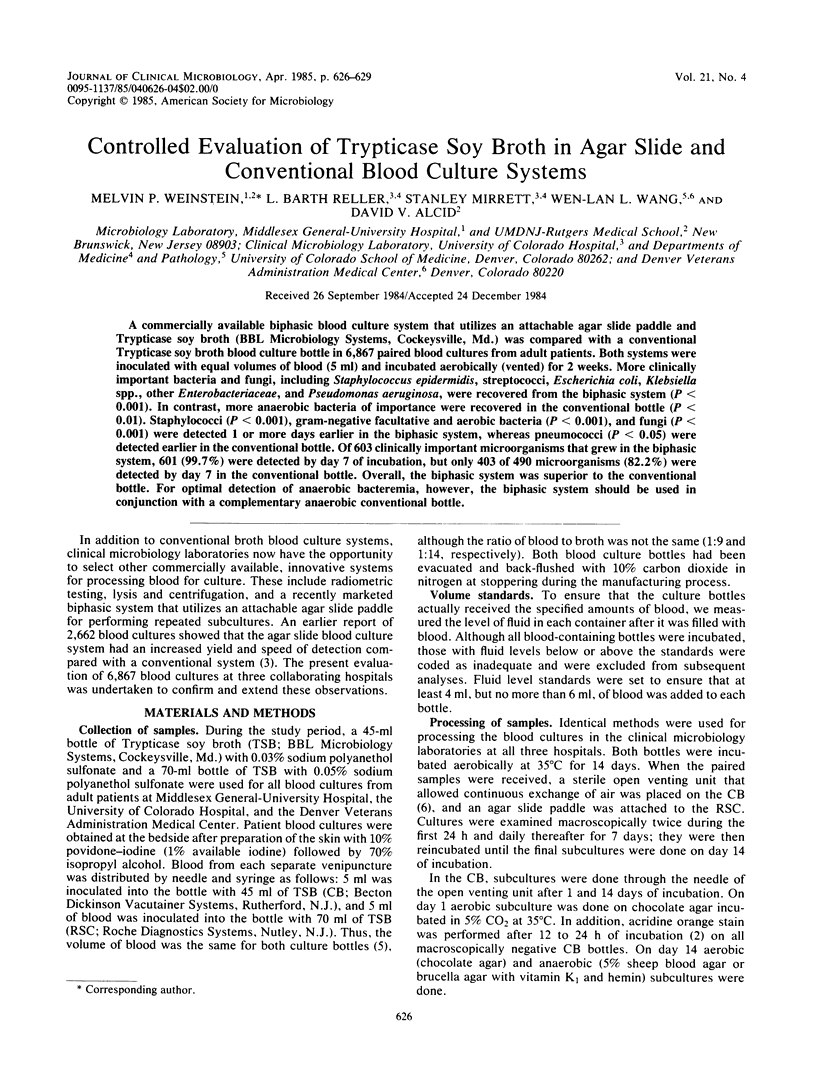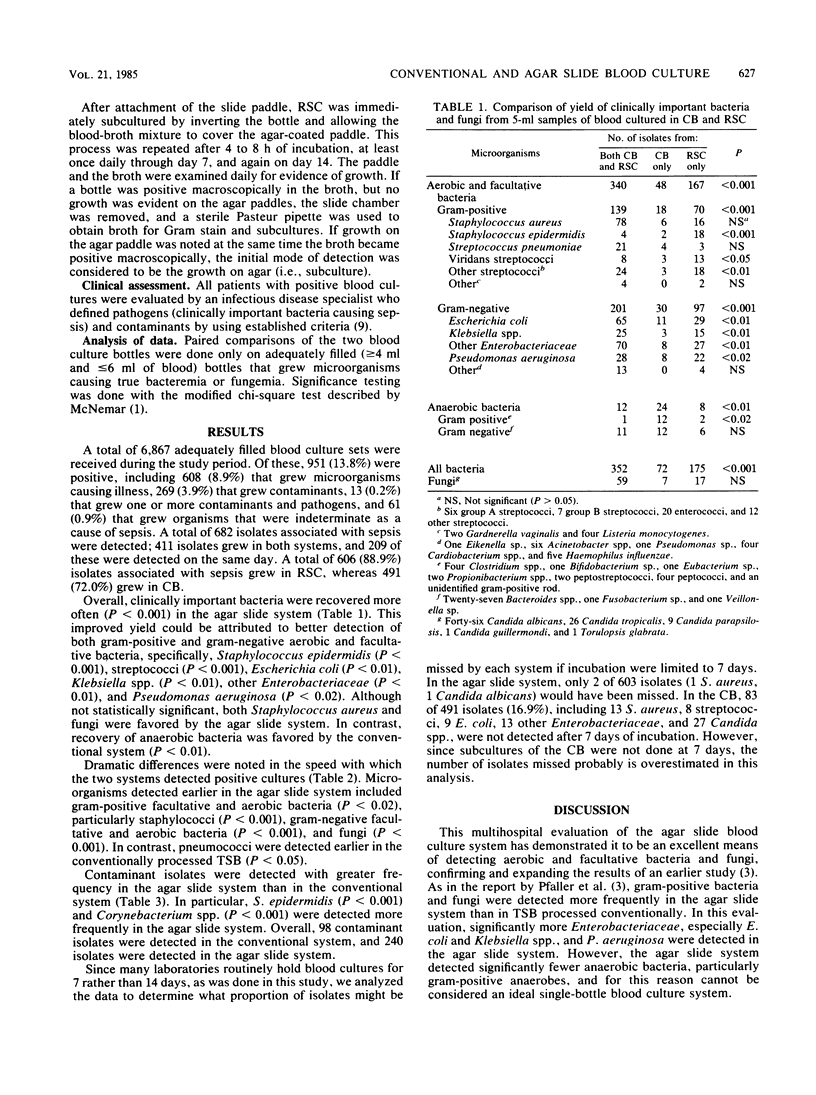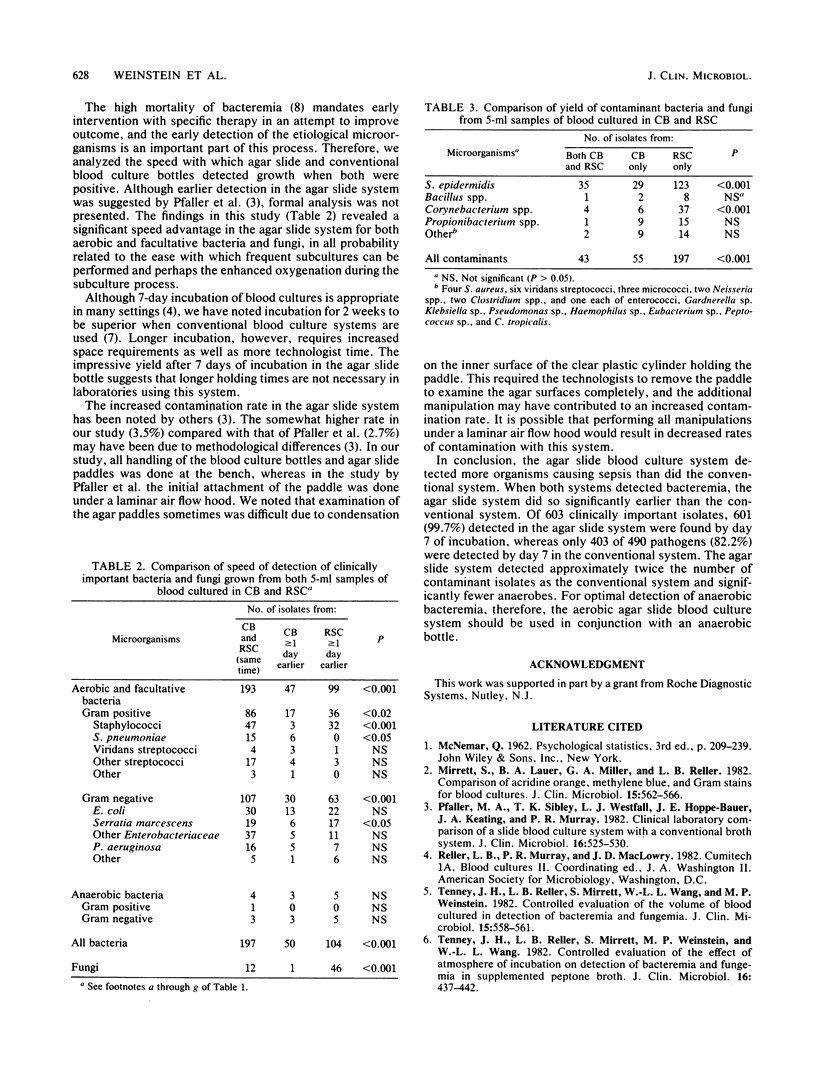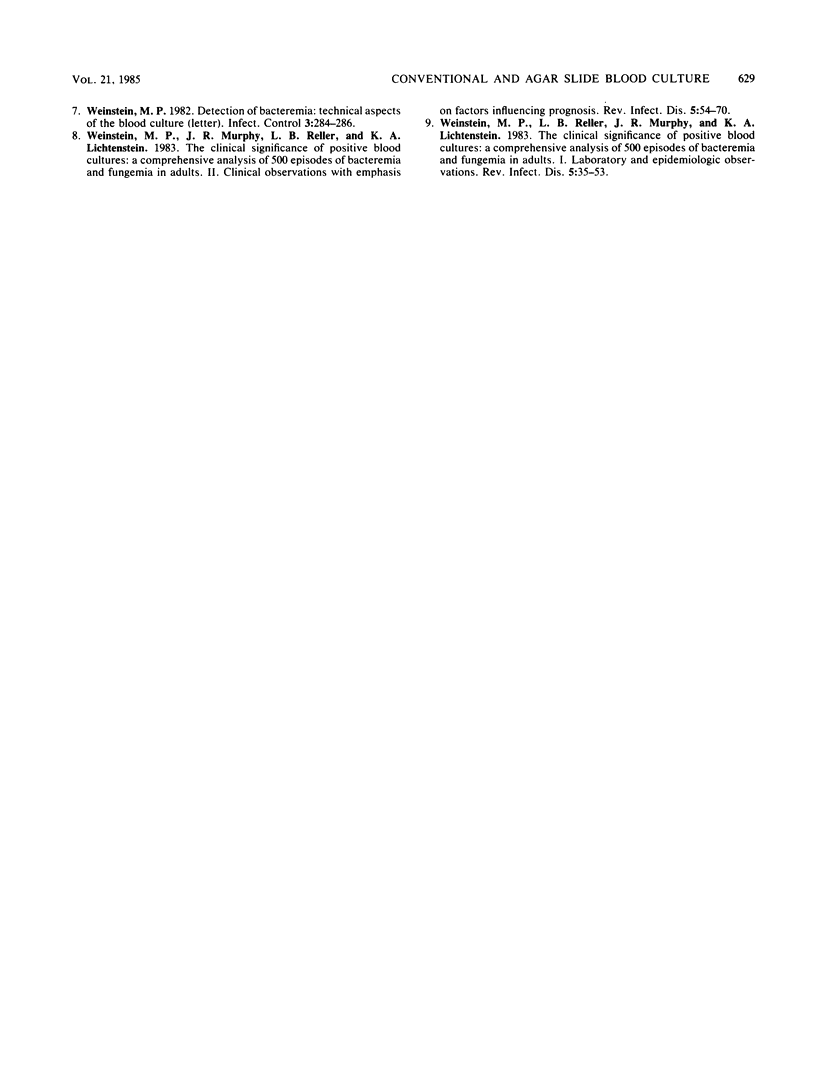Abstract
A commercially available biphasic blood culture system that utilizes an attachable agar slide paddle and Trypticase soy broth (BBL Microbiology Systems, Cockeysville, Md.) was compared with a conventional Trypticase soy broth blood culture bottle in 6,867 paired blood cultures from adult patients. Both systems were inoculated with equal volumes of blood (5 ml) and incubated aerobically (vented) for 2 weeks. More clinically important bacteria and fungi, including Staphylococcus epidermidis, streptococci, Escherichia coli, Klebsiella spp., other Enterobacteriaceae, and Pseudomonas aeruginosa, were recovered from the biphasic system (P less than 0.001). In contrast, more anaerobic bacteria of importance were recovered in the conventional bottle (P less than 0.01). Staphylococci (P less than 0.001), gram-negative facultative and aerobic bacteria (P less than 0.001), and fungi (P less than 0.001) were detected 1 or more days earlier in the biphasic system, whereas pneumococci (P less than 0.05) were detected earlier in the conventional bottle. Of 603 clinically important microorganisms that grew in the biphasic system, 601 (99.7%) were detected by day 7 of incubation, but only 403 of 490 microorganisms (82.2%) were detected by day 7 in the conventional bottle. Overall, the biphasic system was superior to the conventional bottle. For optimal detection of anaerobic bacteremia, however, the biphasic system should be used in conjunction with a complementary anaerobic conventional bottle.
Full text
PDF



Selected References
These references are in PubMed. This may not be the complete list of references from this article.
- Gross P. A. Detection of bacteremia: technical aspects of the blood culture. Infect Control. 1982 Jul-Aug;3(4):284–286. doi: 10.1017/s0195941700056319. [DOI] [PubMed] [Google Scholar]
- Mirrett S., Lauer B. A., Miller G. A., Reller L. B. Comparison of acridine orange, methylene blue, and Gram stains for blood cultures. J Clin Microbiol. 1982 Apr;15(4):562–566. doi: 10.1128/jcm.15.4.562-566.1982. [DOI] [PMC free article] [PubMed] [Google Scholar]
- Pfaller M. A., Sibley T. K., Westfall L. M., Hoppe-Bauer J. E., Keating M. A., Murray P. R. Clinical laboratory comparison of a slide blood culture system with a conventional broth system. J Clin Microbiol. 1982 Sep;16(3):525–530. doi: 10.1128/jcm.16.3.525-530.1982. [DOI] [PMC free article] [PubMed] [Google Scholar]
- Tenney J. H., Reller L. B., Mirrett S., Wang W. L., Weinstein M. P. Controlled evaluation of the volume of blood cultured in detection of bacteremia and fungemia. J Clin Microbiol. 1982 Apr;15(4):558–561. doi: 10.1128/jcm.15.4.558-561.1982. [DOI] [PMC free article] [PubMed] [Google Scholar]
- Tenney J. H., Reller L. B., Mirrett S., Weinstein M. P., Wang W. L. Controlled evaluation of the effect of atmosphere of incubation on detection of bacteremia and fungemia in supplemented peptone broth. J Clin Microbiol. 1982 Sep;16(3):437–442. doi: 10.1128/jcm.16.3.437-442.1982. [DOI] [PMC free article] [PubMed] [Google Scholar]
- Weinstein M. P., Murphy J. R., Reller L. B., Lichtenstein K. A. The clinical significance of positive blood cultures: a comprehensive analysis of 500 episodes of bacteremia and fungemia in adults. II. Clinical observations, with special reference to factors influencing prognosis. Rev Infect Dis. 1983 Jan-Feb;5(1):54–70. doi: 10.1093/clinids/5.1.54. [DOI] [PubMed] [Google Scholar]
- Weinstein M. P., Reller L. B., Murphy J. R., Lichtenstein K. A. The clinical significance of positive blood cultures: a comprehensive analysis of 500 episodes of bacteremia and fungemia in adults. I. Laboratory and epidemiologic observations. Rev Infect Dis. 1983 Jan-Feb;5(1):35–53. doi: 10.1093/clinids/5.1.35. [DOI] [PubMed] [Google Scholar]


